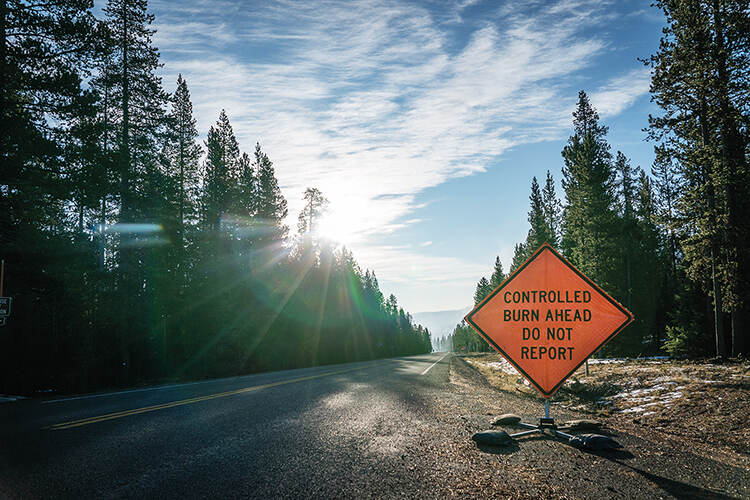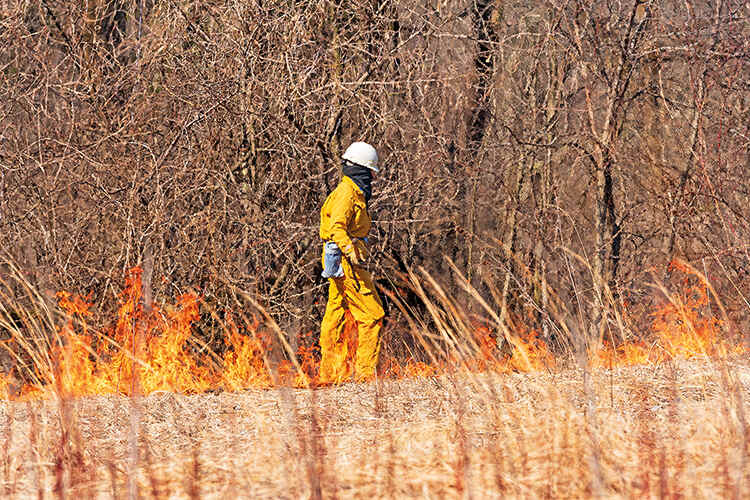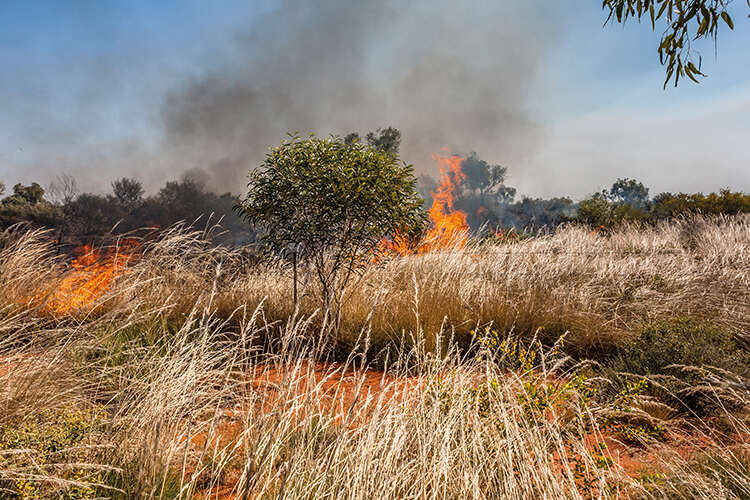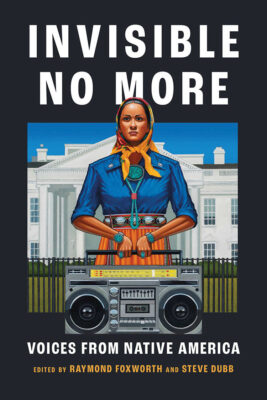
Western science has a lot to learn from Indigenous perspectives on how to manage fire says Hillary Renick, President of the California Indian Land Institute

Fire, a primary element just as important to the natural cycle as water, has historically been vilified as a purely destructive force in Western science and society for its seemingly uncontrollable nature. This misleading characterisation is similar to the early Western views of Indigenous people and it exposes a critical gap in Western understanding of fire ecology.
While professional researchers increasingly have come to understand the essential role that fire plays in our natural system, there remains a lot to be learned from the Indigenous worldview and experience with fire ecology and forest management.
For many tribal nations, fire has been, and continues to be, an important tool for land management. The utilisation of fire as a tool rather than a threat to life comes from a distinctly different conceptual understanding of the roles that humans have in their ecosystems. Where Western societies have sought to conquer and dominate the Earth and reap the land’s bounty of all it had, Indigenous cultures have observed and maintained the ecosystem’s resources so that it would be sustainable and usable for future generations.
Fire is both primal and necessary to a healthy ecology due to its destructive and regenerative properties. This was a concept acknowledged by many Indigenous cultures. Whether Western society chooses to recognise it or not, fire was and continues to be necessary to sustain human life and the biomes in which we exist.
During the period of settler colonisation of the USA, many immigrant journals and early newspapers noted Indigenous fire-use practices. Colonisers, for example, made note of the practices of controlled seasonal burns by the Blackfoot Indians, who were named as such by the colonisers because they had black moccasins from walking on the newly burned prairie. Others noted in newspapers that both American Indians and their manipulation of fire were a danger to society and needed to be eliminated.
Settlers coming to ‘the West’ after the California Gold Rush unknowingly called attention to the results of successful Indigenous fire practices. The settlers celebrated the healthy forests and grasses and the managed landscape, abundant and prosperous — though such observations were generally chalked up to divine intervention. Far from divine intervention, Indigenous land managers continued to practice fire-based ecological stewardship up until the turn of the 20th century.
Indigenous researchers of the past operated with a deep understanding of what today are acknowledged as evidence-based practices for ecological sustainability. Indigenous cultures were full of people who were astute researchers and careful students of the ecological norms of their region. This included studies of disruptive forces such as fire and how the landscape responded and changed over generations. This type of scientific and multi-generational knowledge was necessary for survival.
By utilising their observation, testing, and practice, many Indigenous cultures developed low-risk management practices to achieve the same effect as wildfire while minimising the disruption to ecosystems that provided necessary resources. One method utilised by Indigenous societies in many regions involved controlled, limited burning of forest, meadow and prairie underbrush. Low-intensity burning of underbrush was observed by these Indigenous societies to be a beneficial means of controlling dangerous pests such as ticks, encouraging useful brush crops such as huckleberries, bolstering healthier crops of culturally significant plants such as basket-making material and encouraging young shoots of grass to grow to help animals find food close enough for human hunters to sustain communities. Soil health — the ability of soil to hold water and nutrients —is fundamental to a vital ecosystem.

Initial explorers and immigrants who settled Indigenous land didn’t understand the complex interconnected landscape. For a long time, Western society remained ignorant of the issues associated with otherwise unsustainable short-term ecological practices, policies, and actions – such as suppressing naturally occurring fires. This mentality and the practice of fire suppression have contributed to human-accelerated climate change, which threatens modern standards of life. Only with the development of recent rigorous and longitudinal climate studies has Western science begun to acknowledge that fire-based ecological practices developed long ago by Indigenous practitioners were perpetuating healthy natural cycles.
Today, land management utilising fire as a tool, reminiscent of Indigenous practices, is commonly incorporated within federal and state disaster-mitigation planning. Belatedly, these fire ecology practices are being seen by these agencies as part of the solution to help prevent the widespread destruction of natural and human resources.
Land managers, planners and others now look toward such practices to design far-ranging solutions to help with areas devastated by wildland fires in the rural–urban interface. Of course, throughout the Western world, a form of ecological ‘catch-up’ is being played. Western society’s failure to properly manage fire for the past century or more means that fire-ecology efforts must confront the legacy of a century of fire-ecology mismanagement, a challenge that has been greatly exacerbated by climate change. Today’s mass wildfires are part of this legacy of gross fire-ecology mismanagement.
These days, there’s widespread scientific acknowledgment that Indigenous fire-ecology practices are both appropriate and environmentally necessary. As environmental historian Bill Gammage, an emeritus professor at the Australian National University in Canberra, told the New York Times, ‘Our firefighters have quite good skills in fighting fires. But for preventing them, they are well short of what Aboriginal people could do.’
Even so, the ability of Indigenous communities to manage fire using their cultural land-management principles has been compromised by the modern-day patchwork ownership of lands. While many tribal nations remain in their homelands, most ancestral Indigenous lands are now controlled by federal, state, private and other landowners that cut off headwaters, forest units and connected ecosystems, making it difficult to maintain a healthy, balanced landscape.
The patchwork of jurisdictions is common globally, because in so many places, Indigenous people lack title, access, or rights to ancestral homelands. This theme is even more common when looking at areas of resource extraction. Wherever precious minerals are found, Indigenous people are often marginalised, dispossessed and removed from the landscape. What too many people remain unaware of is that Indigenous people retain cultural and religious ties to the lands of their ancestors, regardless of ownership.
Some sacred spaces and landscapes are today co-managed by Indigenous people and government landowners. Partnerships and agreements can be formal, informal, dependent on political appointees, or take other forms. For example, the Karuk Tribe in northern California works with neighbouring federal landowners to manage its ancestral lands and help community members with forest products for basketry. The Nature Conservancy is working with Karuk and other tribal nations to address threats to terrestrial ecosystems.

While some partnerships advance the knowledge base and include communities in fire-prevention training, it’s a learning experience. Many different disciplines are now working with Indigenous communities to gain knowledge on both sides for better outcomes.
Today, fire archaeologists often go out with fire crews to help protect and advise wildland firefighter teams on the practice and evidence of ancient burning methodologies employed by humans for hundreds of generations. Increasingly, these fire teams have qualified Indigenous experts as part of the team – indeed, there are many specialised all-Indigenous teams.
As climate change becomes a looming threat across the globe, Indigenous communities in the USA are strongly advocating for the widespread adoption of their ancient techniques, which have sustained their populations for millennia. Every tribal nation is connected to its landscape and has been monitoring and watching the changes wrought upon the land since colonisation. Through Indigenous stories, oral histories and documentation, the direct impacts of intergenerational macro-ecosystem patterns can be tracked.
The biodiversity that surrounds us today isn’t all from the past. Today, there are Indigenous communities, individual Indigenous people, and allies working with native-led groups that are working toward a resilient, sustainable future. Without much fanfare, work is being put into buffer zones that are managed to avoid choking out life in urban–rural interfaces. Mixed land uses intended to break up fuel for fires, attract pollinators, aid the migration of large animals and maintain large open spaces are becoming common as a means of reviving natural resources.
For example, as the New York Times reported in January 2020: ‘Over the past decade, fire-prevention programmes, mainly on Aboriginal lands in northern Australia, have cut destructive wildfires in half.’ In the wake of Australia’s mass wildfires, these efforts are likely to be significantly expanded.
There are significant environmental and social justice issues surrounding intentionally set fires in the Amazon, Borneo and Madagascar. Even today, forest clearance and the displacement of Indigenous people continue apace in a complicated pattern of resource-extractive policies.
There is much more that still needs to be done to uncover the intersections of conservation, disaster mitigation and research. In the USA, many tribal nations have Tribal Historic Preservation Offices, which help to organise cultural practitioners of burning and may have qualified staff who can be deployed to fire assignments.
As the mass fires that we’ve seen in recent years in such disparate regions of the globe as California, the Amazon, Siberia, Europe and Australia remind us, we have little time to lose.





